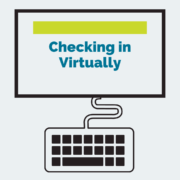Cyber Safety for Today’s Teens

It goes without saying that technology has fully inserted itself into most aspects of our day-to-day lives—and children and teens are no exception. Children are learning to swipe smartphones before they learn to turn the pages of a book, and many of them are swiping on their own devices. For parents, the endless exploration of technology raises many concerns for children and teens. Parents need not only be aware of what their children are getting from the constant connectivity, but also what they may be putting out into the digital universe. Yes, the horror stories surrounding teens and technology are vast and worrisome, but these hard-learned lessons can provide other families with safe cyber practices that will make all the difference for security and peace of mind.
Limit screen time, especially for youngsters. We may have grown to rely on our devices in the adult world. I, myself, use my phone for everything from navigation, to paying bills, to making grocery lists—the list (no pun intended) goes on and on. However, for children, it is essential that their screen time be limited and purposeful. Use screen time as an occasional reward, but make sure that everyone is clear about how long they can use the device and for what purposes.
If you feel that your child must have a phone for staying in touch, consider phones or plans that provide programmed options for usage. For instance, there are ways to program children’s phones so that they are only able to call or text a set list of phone numbers. You can also set restrictions on how data is used or what websites or apps your children can access. The key here is to keep your children’s circle small when introducing them to their first phone—the stricter the parameters, the more peace of mind parents will have about children using technology.
Be aware of your child or teen’s social media presence. Keep a very watchful eye on your child’s use of social media and limit access to devices when concerns arise. You should insist on access to or control over your teen’s social media accounts whenever necessary. If you suspect that your child is cyberbullying or being cyberbullied, take the phone. Keeps records of any evidence that your child is being bullied, including text messages, screen shots, profile posts or photos, etc. Schools today are cracking down on bullying; however, parents must present documented, repeated instances of harassment or bullying before school officials will intervene.
Along the same lines as cyberbullying concerns, parents should monitor social media accounts to ensure that children are protecting themselves and being digitally responsible. Teens today are so concerned with obtaining “likes” and gaining “followers” that they lose sight of how vulnerable they may be making themselves online. Explain to them that, even with privacy settings, nothing is 100% private when it comes to posts, comments, photos, etc. Make sure that teens are not using personal information, like a full name, specific address, current location, or school. Social media sites make it extremely easy to tag one’s location, but too often teens fail to consider who might be keeping tabs on their location. Gently, but firmly, remind your children that not everyone on social media is who they claim to be.
Talk about the permanency of our digital footprints. This means that, once posted online, ownership no longer belongs to you. Even deleted material is not ever fully erased if even one person has captured, saved, or screenshotted the post. Not only can deleted posts resurface, people can edit or manipulate the photo or post in any way they choose. Teach children and teens to think carefully before making a post.










